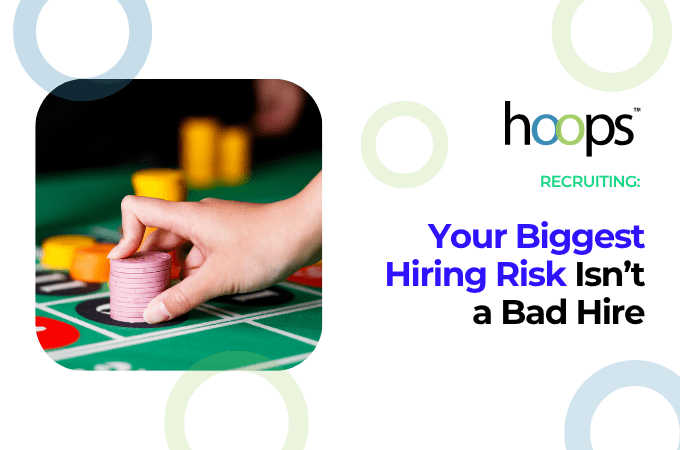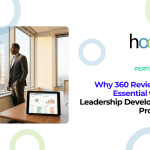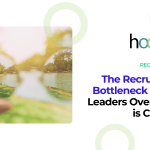Every company talks about avoiding a bad hire. And sure, a bad hire hurts. They drain your team, frustrate your managers, and—if you’re unlucky—do real cultural damage.
But here’s the reality. You will make a bad hire at some point. It is unavoidable. Even world-class companies do. They follow every best practice, and someone still slips through the cracks.
What leaders rarely see is the cost on the other side of the equation. While you’re working so hard to prevent the next bad hire, you’re losing something far more expensive. You’re losing the right hire. You miss the bold thinker, the builder, the operator, the person who sees what is broken and fixes it. The candidate who would have added energy and forward motion to the whole team.
This is the real hiring risk. Not the occasional miss — but the great hire you never make. When teams try to eliminate every misstep, they create a hiring process that feels like a vault: heavy, slow, and guarded. It feels safe on paper, but in practice, it causes waste, rework, burnout, and stalled execution.
The concerning part? Most CEOs have no idea it’s happening.
The Bad-Hire Fear That Quietly Runs Your Company
Every executive remembers the hire that went sideways. That memory becomes a yardstick — the story that shapes the next hiring decision and the hidden fear.
So what do teams do? They add more interviews. They expand the panel. They create more steps. They “need more candidates to compare to.” They qualify and over-qualify.
It all feels responsible. But the process is optimized around the fear of being the person who “let the bad hire on,” not around the risk of losing the right one.
That is the wrong hiring risk.
And yes, some roles are truly critical and require sharper caution. But those roles make up only 10–15% of the company. Treating every role like it lives in that category slows the business down far more than it protects it.
The Risk You’re Not Managing: The Cost of the Right Person You Never Hire
Vacant roles are expensive, but the real cost is what never happens while the seat is empty.
McKinsey has shown that high performers deliver 400–800% more output than average employees in complex roles. That means the upside of the right hire is massive — and the missed hire upside is even bigger.
Yet inside most companies, no one owns that number. Everyone remembers the bad hire and no one measures the lost opportunity of the great one that slipped away.
Seen through this lens, a pattern emerges. Hiring teams aren’t always slow because there are no good candidates. They’re slow because they’re afraid to make mistakes, which isn’t focused on what’s best for the business.
How Risk-Averse Hiring Shows Up In Your Process
You can feel it inside the company even before you name it. Here are the most common signals:
1. Roles get more interview rounds the more important they are
Leaders know the role is high impact, so they invite more people into the process. But that often makes the process slower, heavier, and messier. Everyone brings different preferences. Everyone thinks they “see something the others missed.”
The result? The team loses sight of what the role was even supposed to accomplish. You get twelve opinions and zero clarity, and many times end up hiring a person you didn’t even need.
2. Teams make miscalibrated gut calls
Gut instinct matters, but most people’s gut is trained on the wrong things. Comfort, familiarity, and fear often outweigh real performance indicators. So teams pass on strong candidates who feel “different” and overvalue those who feel familiar. Middle managers feel the most pressure, so their instinct leans toward avoiding blame instead of spotting potential.
When the gut isn’t calibrated, it quietly screens out the exact people who could elevate the team.
3. Every interviewer is hiring for a different job
When people are worried about avoiding a bad hire, they start evaluating candidates through their own lens — “how will this help me,” “will this make my job easier,” “will this person fit my style.” Everyone is screening for something different, and no one is aligned on what the role actually needs to deliver for the company.
Then what happens? Mixed feedback, slow decisions, and strong candidates slipping away because the team wasn’t aligned on what’s best for the business needs.
4. Hiring teams default to people who look like past hires
When teams are worried about avoiding a bad hire, they anchor to what feels familiar. If the past hire was a true standout, that can be useful. But most of the time, the “benchmark” is an average performer — someone who kept the lights on but didn’t move the needle. So the team ends up hiring to the minimum instead of the potential of the role.
Stronger, more strategic candidates get overlooked simply because they don’t match the pattern the team is used to.
5. The bar becomes “no obvious risk,” not “real potential”
When the goal is avoiding a bad hire, teams start looking for the safest option instead of the strongest one. Candidates with fresh thinking or bolder ideas feel “too risky,” so the team defaults to the person who feels most predictable. Hiring becomes about minimizing mistakes instead of selecting for impact.
And that’s how teams get slower, not stronger.
Reframing Hiring: Stop Guarding Against Risk. Start Managing It.
Some companies take the protective approach too far. They build layers, steps, and committees meant to prevent mistakes, but those layers end up slowing decisions and hiding the real opportunity cost.
Hiring is not about achieving certainty. It is about making informed decisions with imperfect information.
Great companies don’t eliminate risk. They manage it. They define the role clearly, align the team, evaluate real competencies, and make timely decisions. They know not every hire will work out. But they also know delaying the right hire stalls progress far more than an occasional bad one ever will.
Confident hiring isn’t fast or reckless. It’s structured, aligned, and grounded in what the business actually needs.
Five Moves to Fix Your Hiring Risk Posture
These are practical fixes CEOs can mandate immediately.
1. Put a clear decision timeline in place for key roles
Most teams start hiring without agreeing on when they need the hire and when decisions will be made. Set a hiring timeline before you open the role. Include the target start date, how quickly candidates should move through stages, when decision deadlines occur, and who has final say.
A simple example: “We will make a hiring decision within five business days of the final interview unless new, material information appears.”
This prevents drift, keeps urgency, and stops over-qualification loops.
2. Cap the number of interviewers and stages
Too many interviewers create noise, not insight. A practical rule of thumb:
- 3 to 4 total interviewers maximum (for most roles)
- 2 to 3 total stages maximum (for most roles)
- Use one unified success profile (like a candidate scorecard)
- Each interviewer owns distinct competencies
This creates clarity and reduces inconsistent, fear-based decision-making.
3. Make the cost of vacancy visible
Vacant roles have a quantifiable cost.
You can estimate it using lost or delayed revenue, project slowdowns, customer impact, team burnout, rework or quality issues, overtime or temporary labor, and/or opportunity cost of delayed initiatives. Give your leadership team a simple monthly metric:
Cost of Vacancy (COV) = (Annual value of role / 12) + measurable project or revenue impact
When leaders see the cost of waiting next to the fear of a bad hire, the real risks become clearer.
4. De-risk through onboarding, not endless interviewing
The best companies don’t try to finalize certainty before day one. They build a strong first-90-days system that includes clear expectations, measurable outcomes, a fast feedback loop, structured check-ins, and support and accountability.
A study by Brandon Hall Group found that organizations with a strong onboarding process improved new-hire retention by up to 82% and productivity by over 70%, making it one of the highest-ROI ways to reduce hiring risk.
Endless interviewing can’t replace strong onboarding — but strong onboarding can train against most hiring uncertainty.
Hoops also builds onboarding plans that reduce risk and help new hires ramp faster.
5. Bring in outside expertise when you need objectivity
A neutral expert prevents over-engineering and missed upside. Hoops does this every day:
- We run a strategic intake call to align the team
- We refine the role (often adjusting title, expectations, or scope)
- We calibrate the success profile
- We assess market competitiveness
- We design a practical, aligned hiring process
- We help leaders make confident decisions without slowing the business down
This reduces hiring risk not by dragging out the process, but by clarifying it.
From Alignment to Impact
A hiring process built to eliminate all risk is a hiring process that eliminates opportunity.
The goal is not speed for its own sake. And it’s not avoiding every bad hire. The goal is clarity, alignment, and decisions that move the business forward.
High performers change businesses. Missing those people is the hiring risk most companies don’t see until it shows up as slow growth, stalled projects, and teams running on fumes.
Hoops helps companies fix this.
We run strategic intake sessions, build clear success profiles, streamline interview stages, and bring objective expertise into every step of the hiring process. Whether you need ongoing recruiting support, a one-time search, or an executive hire search, you get a strategic recruiting partner who helps you hire the right people with confidence and alignment.
👉 If you want a hiring process that moves with clarity instead of caution, schedule a quick discovery call and see how Hoops can help you hire the right people with confidence from day one.
Build Your Winning Team. Hire and Scale Talent.







